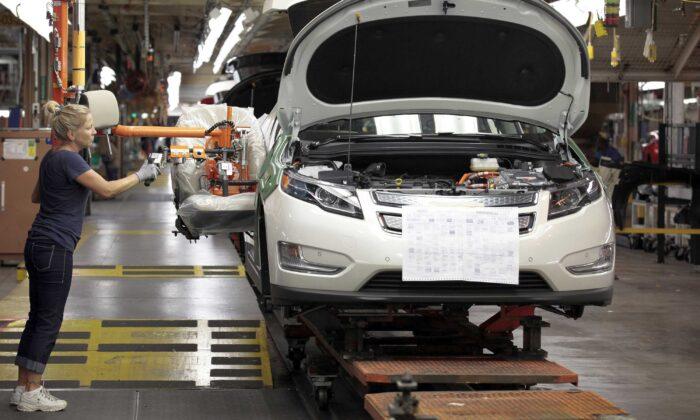WASHINGTON—New orders for key U.S.-made capital goods increased for an eighth straight month in December, pointing to solid growth in business spending on equipment in the fourth quarter and likely helping to underpin the economic recovery.
Orders for non-defense capital goods excluding aircraft, a closely watched proxy for business spending plans, rose 0.6 percent last month, the Commerce Department said on Jan. 27. These so-called core capital goods orders advanced 1.0 percent in November. Last month’s increase was in line with economists’ expectations.
Core capital goods orders surged 1.8 percent year-on-year in December. Demand has shifted away from services like travel and hospitality towards goods like motor vehicles, electronics, and medical equipment during the COVID-19 pandemic. That has contributed to boosting production at factories, though output remains about 2.6 percent below its pre-pandemic level.
Manufacturing, which accounts for 11.9 percent of the economy, is also being supported by businesses rebuilding depleted inventories. In December, core capital goods orders were lifted by demand for machinery and primary and fabricated metal products. But orders for computers and electronic products fell while bookings for electrical equipment, appliances, and components barely rose.
Shipments of core capital goods increased 0.5 percent last month. Core capital goods shipments are used to calculate equipment spending in the government’s gross domestic product measurement. They gained 0.5 percent in November.
The data came ahead of the government’s snapshot of fourth-quarter gross domestic product on Jan. 28. According to a Reuters survey of economists, GDP likely increased at a 4.0 percent annualized rate last quarter.
The anticipated sharp deceleration in growth from a record 33.4 percent pace of expansion in the July–September period would reflect the exhaustion of nearly $3 trillion in pandemic relief money from the government and a flare-up of coronavirus infections.
The government provided nearly $900 billion in additional fiscal stimulus at the end of December, which is likely to jolt consumer spending in January after it slowed in the last two months. President Joe Biden has unveiled a recovery plan worth $1.9 trillion, although there is resistance from some lawmakers.
The economy contracted at a 31.4 percent rate in the second quarter, the deepest since the government started keeping records in 1947. It plunged into recession last February. Business investment on equipment rebounded strongly in the third quarter after five straight quarterly declines.
Orders for durable goods, items ranging from toasters to aircraft that are meant to last three years or more, gained 0.2 percent in December after rising 1.2 percent in November.
Durable goods orders were restrained by a 1.0 percent decline in orders for transportation equipment, which followed a 1.9 percent increase in November.
Orders for civilian aircraft plunged 51.8 percent. This was despite Boeing reporting on its website that it had received 90 aircraft orders in December, up from 27 in November.
The government recently lifted a 20-month grounding of Boeing’s best-selling 737 MAX jets that came after two crashes in Indonesia and Ethiopia.
Orders for motor vehicles and parts rose 1.4 percent in December after accelerating 2.8 percent in November.






Friends Read Free